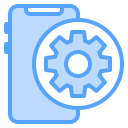
Theme: Best Cross-Platform Mobile Development Tools
Discover the best cross-platform mobile development tools shaping modern apps. From rapid prototyping to production-grade performance, explore practical guidance, real stories, and frameworks that help you ship faster on iOS and Android. Subscribe for ongoing deep dives and join the conversation.
Why Cross-Platform Matters Right Now
Shipping simultaneously to iOS and Android with one codebase accelerates learning loops. Every release brings unified analytics, shared bug fixes, and aligned feature parity, helping teams validate value faster and iterate with confidence.

Flutter: Pixel-Perfect UIs at High Performance
Flutter’s Skia rendering engine ensures consistent visuals across devices. Hot reload shortens feedback cycles, while a rich widget catalog accelerates building delightful interfaces without wrestling with platform-specific inconsistencies or layout surprises.


Flutter: Pixel-Perfect UIs at High Performance
If your product lives or dies by design fidelity, Flutter delivers. Teams love it for dashboards, fintech apps, and complex animations where every pixel matters and brand consistency cannot be compromised across platforms or screen sizes.
React Native: JavaScript Reach, Native Power
Why Many Teams Still Choose React Native
JavaScript familiarity lowers adoption friction. The component mindset maps well to mobile views, and mature patterns exist for navigation, state management, and over-the-air updates that keep features shipping without lengthy app store delays.
Ecosystem Strengths and Library Options
From React Navigation to Reanimated and community-driven native modules, the ecosystem is deep. Expo simplifies onboarding and delivery, while strong community support helps you troubleshoot issues and adopt best practices at production scale.
Performance Tips That Truly Matter
Use Hermes, batch state updates, and reduce unnecessary re-renders. Profile bridges, offload heavy tasks to native modules, and adopt the New Architecture. These steps preserve smooth gestures and reliable frame rates across demanding screens.
Kotlin Multiplatform Mobile: Shared Logic, Native UIs
Why KMM Fits Native-Oriented Workflows
You keep SwiftUI or UIKit on iOS and Jetpack Compose on Android, while sharing networking, models, and domain logic. This respects native design while maximizing code reuse where it delivers the highest certainty and stability.
Teams That Benefit Most from KMM
Organizations with established native expertise and strong architecture practices excel with KMM. It’s especially effective when product differentiation hinges on platform-specific UI polish but business logic must stay consistent everywhere.
A Pragmatic Migration Path
Start by sharing data models and API layers, then gradually move more logic. Publish a shared library, keep platform UIs intact, and expand incrementally. This minimizes risk and avoids disruptive rewrites during critical roadmap periods.
.NET MAUI: The Successor to Xamarin
MAUI streamlines project structures, modernizes tooling, and broadens platform reach. With a single project and improved handlers, developers get clearer architecture, better performance paths, and a more unified development experience across targets.
.NET MAUI: The Successor to Xamarin
C# and .NET ecosystems bring strong testing, CI, and security practices. Enterprises appreciate long-term support, robust IDE integration, and the familiarity of existing code quality tools used across their broader software stacks.
.NET MAUI: The Successor to Xamarin
Audit dependencies, map Xamarin features to MAUI equivalents, and prioritize critical screens. Pilot a small module, test thoroughly, then roll forward. Share your lessons with our readers and subscribe to follow upcoming migration guides.



Choosing the Best Tool for Your Product
Match Tool to Team and Reality
If your team is strong in web, consider React Native or Ionic. If pixel-perfect visuals lead, evaluate Flutter. If native UI fidelity matters most, KMM or MAUI can deliver a pragmatic balance.
Budget, Timelines, and Risk
Short timelines favor mature ecosystems and familiar languages. Consider maintenance costs, long-term hiring pools, and plugin reliability. Ask hard questions, then choose the tool that reduces risk while supporting near-term milestones.
Join the Conversation and Stay Updated
Tell us which stack you trust and why. What trade-offs surprised you? Comment with your lessons, subscribe for field-tested playbooks, and help shape our upcoming deep dives into real production architectures.
